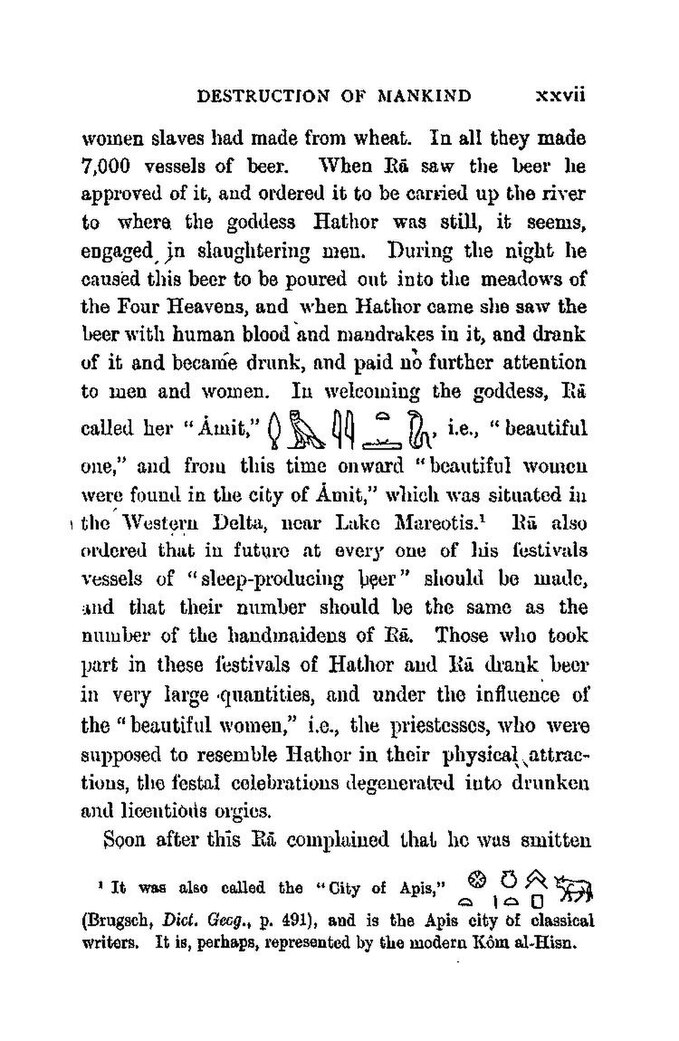women slaves had made from wheat. In all they made 7,000 vessels of beer. When Rā saw the beer he approved of it, and ordered it to be carried up the river to where the goddess Hathor was still, it seems, engaged in slaughtering men. During the night he caused this beer to be poured out into the meadows of the Four Heavens, and when Hathor came she saw the beer with human blood and mandrakes in it, and drank of it and became drunk, and paid no further attention to men and women. In welcoming the goddess, Rā called her “Ȧmit,”
| |
, i.e., "beautiful one,” and from this time onward “beautiful women were found in the city of Ȧmit,” which was situated in the Western Delta, near Lake Mareotis.[1] Rā also ordered that in future at every one of his festivals vessels of “sleep-producing beer” should be made, and that their number should be the same as the number of the handmaidens of Rā. Those who took part in these festivals of Hathor and Rā drank beer in very large quantities, and under the influence of the “beautiful women,” i.e., the priestesses, who were supposed to resemble Hathor in their physical attractions, the festal celebrations degenerated into drunken and licentious orgies.
Soon after this Rā complained that he was smitten
- ↑ It was also called the "City of Apis,"
(Brugsch, Dict. Gecg., p. 491), and is the Apis city of classical writers. It is, perhaps, represented by the modern Kôm al-Hisn.







